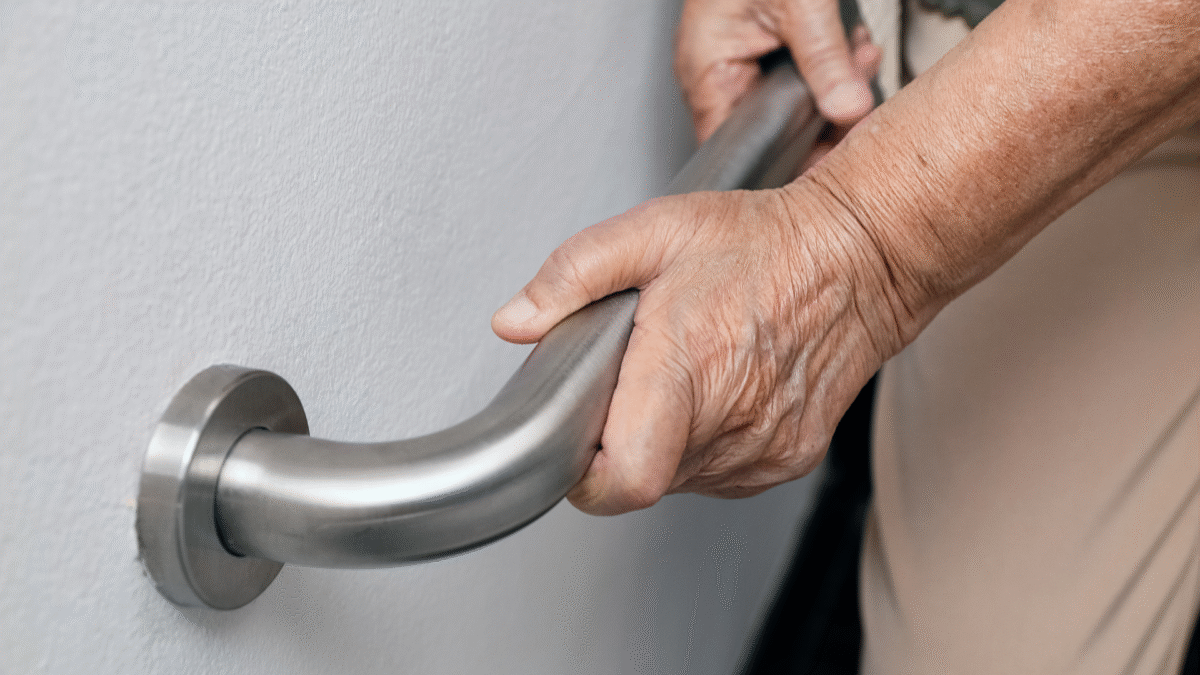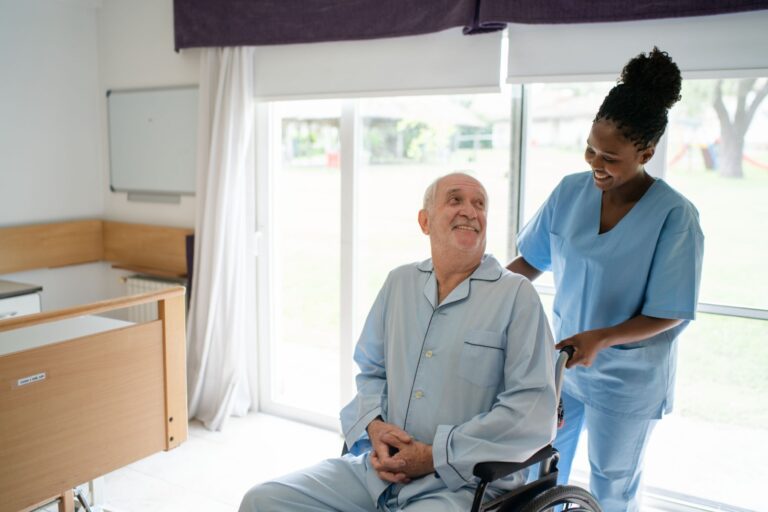Need Help at Home? We’re Just a Call Away. +1-781-457-6112

Creating a Safe Home Environment for Seniors: Room-by-Room Checklist
As our loved ones age, their homes, once familiar havens, can inadvertently become sources of risk. Falls are a leading cause of injury and hospitalization among older adults, but many can be prevented with simple, thoughtful home modifications for seniors. Creating a safe, elder-friendly home isn’t just about preventing accidents; it’s about fostering independence, comfort, and peace of mind for everyone. This guide focuses on senior home safety.
This guide provides a practical, room-by-room checklist to help you identify and address potential hazards, making your loved one’s home a safer place to thrive and helping with crucial fall prevention.
General Home Safety: The Foundation
Before we dive into specific rooms, let’s cover some universal principles that apply throughout the entire home for effective senior home safety:
- Declutter Ruthlessly: Excess furniture, decorative items, and piles of newspapers or magazines can be major trip hazards. Keep walkways clear and spacious.
- Remove Trip Hazards:
- Rugs: Eliminate throw rugs entirely or ensure they are securely taped down with double-sided tape to prevent slipping or bunching.
- Cords: Secure all electrical and phone cords along walls or under furniture, out of walking paths. Avoid running cords under carpets.
- Adequate Lighting: Ensure all areas are well-lit. Use brighter bulbs, add nightlights in hallways and bathrooms, and ensure light switches are easily accessible at room entrances. Consider motion-sensor lights for dark areas.
- Emergency Preparedness:
- Post emergency contact numbers (family, doctor, emergency services) near every phone.
- Ensure smoke detectors and carbon monoxide detectors are functioning and batteries are regularly checked.
- Consider a personal emergency response system (PERS) that allows your loved one to call for help with the push of a button.
- Stair Safety (if applicable):
- Ensure sturdy handrails on both sides of staircases.
- Add contrasting color strips to the edges of steps to improve visibility.
- Ensure stairs are well-lit.
- Consider a stairlift if mobility is significantly limited.
- Doorways: Ensure doorways are wide enough for walkers or wheelchairs if needed. Remove thresholds that could pose a tripping risk.
Kitchen Safety: The Heart of the Home
The kitchen is often a hub of activity, but it also contains unique hazards. Implementing home modifications for seniors here is crucial.
- Flooring:
- Use anti-slip mats or rugs near the sink and stove.
- Clean spills immediately to prevent slips. This is key for fall prevention.
- Accessibility:
- Store frequently used items (dishes, pots, pantry staples) on lower shelves that are easy to reach without stretching or bending excessively.
- Consider pull-out shelves or lazy Susans in cabinets for easier access.
- Ensure appliance controls are easy to see and operate.
- Appliances:
- Consider an electric kettle that automatically shuts off.
- Ensure stove knobs are easy to turn and clearly marked. Some newer stovetops have auto-shutoff features.
- Ensure refrigerator and freezer doors are easy to open.
- Seating: A sturdy chair or stool can be helpful for resting while preparing meals.
Bathroom Safety: Critical for Preventing Falls
The bathroom is arguably the most hazardous room for seniors due to wet, slippery surfaces and confined spaces. Prioritizing senior home safety here is paramount.
-
- Grab Bars: Install sturdy grab bars:
- Inside the shower/tub.
- Next to the toilet.
- Ensure they are professionally installed into wall studs, not just drywall.
- Shower/Tub Safety:
- Use a non-slip mat or textured strips inside the shower or tub.
- A shower chair or bench can provide a safe place to sit while bathing.
- A handheld showerhead makes bathing easier and safer.
- Consider a walk-in shower if a tub is difficult to step over.
- Toilet Safety:
- A raised toilet seat with armrests can make sitting down and standing up much easier.
- Ensure adequate lighting, especially for nighttime use (e.g., nightlights).
- Flooring: Use non-slip mats outside the shower/tub and near the toilet. This aids in fall prevention.
- Faucet Controls: Ensure water temperature controls are easy to adjust and clearly marked to prevent burns. Consider anti-scald devices.
- Grab Bars: Install sturdy grab bars:
Bedroom Safety: Rest and Security
The bedroom should be a sanctuary, free from hazards that could disrupt sleep or lead to falls. Making this an elder-friendly home space is key.
- Lighting:
- Ensure easy access to light switches from the bed. Touch-lamps or remote-controlled lights are excellent options.
- Use nightlights from the bedroom to the bathroom to illuminate the path for nighttime trips.
- Bed Height: Ensure the bed is at a comfortable height, allowing feet to touch the floor when sitting on the edge.
- Flooring:
- Remove throw rugs or ensure they are firmly secured.
- Ensure flooring is even and non-slip.
- Pathways: Keep the path from the bed to the bathroom and bedroom door clear of clutter. This is part of effective fall prevention.
- Phone Access: Keep a phone and emergency contact list within easy reach of the bed.
When to Consult an Occupational Therapist for a Professional Home Safety Assessment
While this checklist is a great starting point, a professional assessment can provide invaluable insights and personalized recommendations. An Occupational Therapist (OT) specializes in helping people adapt to their environments to live more independently and safely. They can provide a comprehensive occupational therapy home assessment.
Consider consulting an OT if:
- Your loved one has experienced falls: Even one fall warrants a professional assessment to identify underlying causes and environmental risks.
- There are significant mobility issues: If your loved one uses a walker, wheelchair, or has difficulty with balance.
- There are vision or cognitive impairments: These can significantly increase fall risk.
- You’re unsure where to start: An OT can provide a comprehensive, tailored plan for home modifications for seniors.
- Complex modifications are needed: For example, assessing the feasibility of ramps, stairlifts, or major bathroom renovations.
- You want to proactively prevent falls: An OT can identify subtle hazards you might miss.
An OT will conduct a thorough walk-through of the home, observing how your loved one moves and interacts with their environment. They can recommend specific adaptive equipment, suggest structural modifications, and even provide training on safe movement techniques. Your loved one’s doctor can often provide a referral to an occupational therapist for a home safety assessment.
By taking these steps, you can create an elder-friendly home that not only reduces the risk of falls and injuries but also empowers your senior loved one to maintain their independence and enjoy their home more safely and comfortably.



